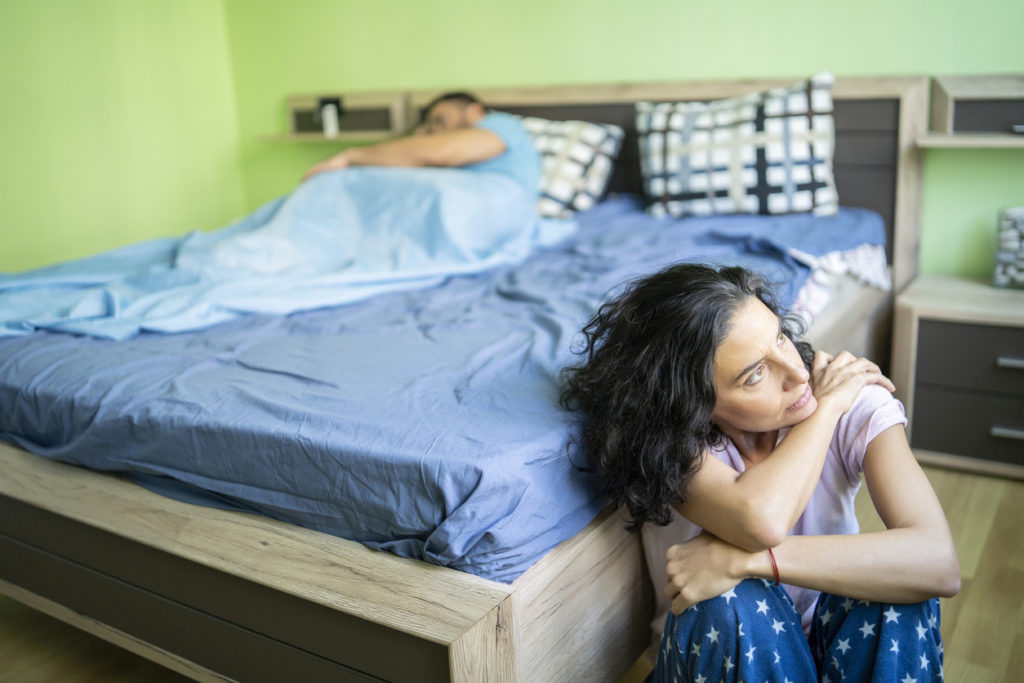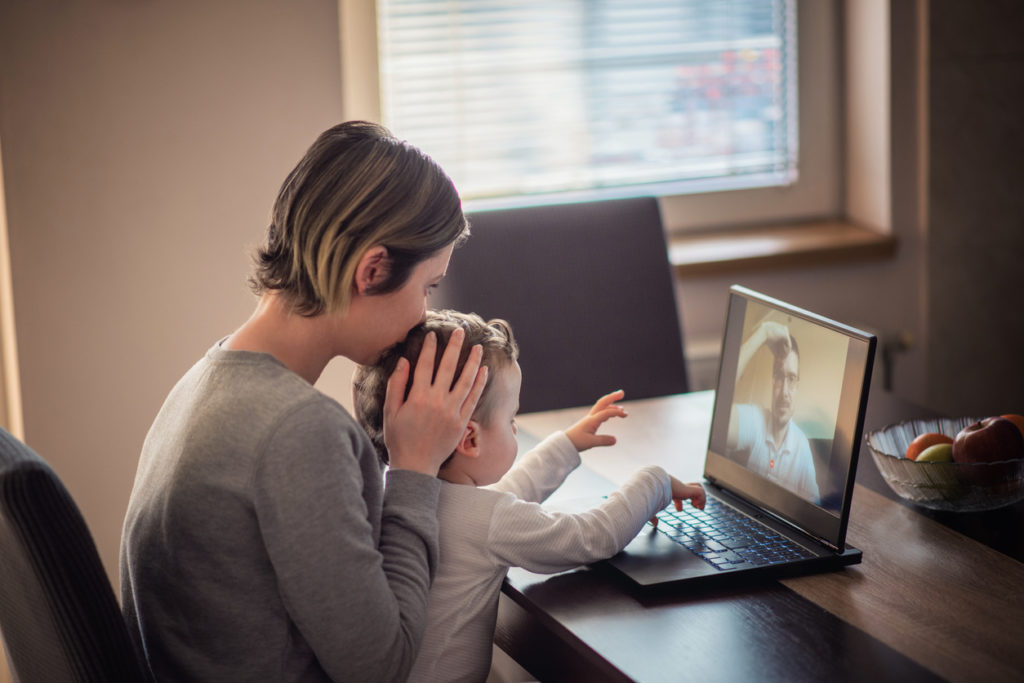The COVID-19 pandemic has been hard on everyone. Many people found themselves suddenly unemployed and unable to make ends meet. Schools have shuttered, and plans have changed. Unfortunately, the sudden upheaval has left married couples in challenging positions at times. Many may be wondering how COVID has impacted the divorce rate. The answer may surprise you.
Are Divorce Rates Up During the COVID Pandemic?
It’s not clear whether divorce rates are up during COVID. The New York Post1 reports that the number of people interested in getting divorced is up 34% in 2020 over 2019. However, University of Virginia sociology professor Brad Wilcox2 says that actual divorce rates are down in a number of states.

Also, with the logistical difficulties and delays in legal proceedings caused by COVID, it may be challenging to compare divorce filing and judgment rates during different periods to know whether divorce rates are up during COVID.
2020 Divorce Rates
Numerous sources have reported the divorce rate in 2020. These include:
- The New York Post1 says that the number of people interested in divorce has increased 34% from March to June between 2019 and 2020
- The American Family Survey3 states that 58% of spouses surveyed believe the pandemic has made them appreciate their spouses more
- In November 2020, the Institute for Family Studies4 reported that the divorce rates are at an all-time low
- The current divorce rate is 2.9 per 1,000 population, according to the Centers for Disease Control and Prevention (CDC)5
Before COVID, divorce rates in the United States were trending down. Whether that trend continued during COVID depends on who you ask. There are some reasons why the divorce rate could go up or down during a pandemic.
[cta_banner title=”Free Consultation” subtitle=”Use our 24/7 online tool to schedule time with one of our experienced lawyers.” link=”https://www.halfpricelawyers.com/schedule-a-free-consultation-bf/” link_text=”Schedule Now”]
Why Would Divorce Rates Go Up During COVID-19?
Here are some reasons that divorce rates may go up during COVID:
- Close quarters. Families are spending more time than ever under one roof. Proximity can cause increased tensions.
- Parenting disagreements. With schools closed, parenting plans have been thrown into disarray. More parents are turning to homeschooling or just struggling for ways to keep their kids educated and entertained. Kids may have a more challenging time accessing special education services. All of these needs and frustrations can make family relationships difficult.
- Pandemic orders caused entertainment venues, restaurants, transportation services and other businesses to close their doors. Individuals who never would have worried about unemployment suddenly found themselves out of work. Unemployment strains family budgets, which can cause worry and relationship difficulties.
- Loss of loved ones. The pandemic caused many families to lose loved ones too soon. Sudden loss can cause stress and anxiety. Unexpected losses may trigger divorce during a pandemic.
- Substance abuse. EHS Today6 reports that substance abuse is a pandemic within a pandemic. Many of the resources that people traditionally turn to for help, like Alcoholics Anonymous, counseling and treatment centers, have been more difficult to access during the pandemic. Also, anxiety and uncertainty may contribute to substance abuse.
- Mental health. The COVID pandemic has taken a toll on mental health. Anxiety and depression have increased for many as the pandemic has lasted months. Mental health struggles can cause marriage difficulties.

Why Would Divorce Rates Go Down During COVID-19?
Here are some reasons that divorce rates could go down during COVID:
- Reduced risk. Risk-taking decreases during periods of uncertainty. With COVID-19 creating upheaval, many spouses are unwilling to throw more uncertainty into the mix by initiating a divorce. Just like crime rates fell during the Great Recession, people may be reluctant to add to the tension already in their life by adding changes like a divorce.
- Financial difficulties. There is a cost to getting divorced. In addition to court costs and filing fees, divorce causes couples to spread the same household income into two units. The couple now has to pay for two sets of overhead like housing. With the financial difficulties of the pandemic, couples may be unwilling to undertake this burden.
- Court closures and delays. Logistically, it may be harder to get divorced today. Courts have delayed proceedings because of COVID. Courts have changed the way that they do things and hearings may have moved online. It can be challenging for the average person to keep up. Court delays and closures may prompt lower divorce rates.
- Added value of marriage. With the American Family Survey reporting that 51% of spouses have deepened their commitment to marriage, spouses may depend on each other more during a pandemic. Increased appreciation for spouses may lead to a lower divorce rate.
Divorce Issues During COVID
There are several unique divorce issues that may be present during COVID. The most challenging include:
1. Court rules are in effect during COVID unless there is another order in place.
The parties have the logistical difficulties of filing and processing the divorce during a pandemic. Rules for filing divorce paperwork may have changed. The parties may not be able to file documents in person. Live court hearings may now take place over the internet.

A person involved in a divorce needs to know and comply with the rules in their local area. They must be prepared for delays, which can be frustrating. However, a litigant also needs to be ready because court rules and rules of civil procedure are still in force. Without information to the contrary, a party must still comply with the rules and laws that apply to divorce.
2. Changes in employment and resources because of COVID may change the outcome of a divorce.
In addition to procedural changes, the circumstances of the parties may have changed during COVID. In turn, that may change the outcome of a divorce. If a party has lost their job, that may change their ability to pay child support. A change in family resources may change what each party receives in the divorce settlement. A divorce considers the resources of the parties. When those resources change, in turn, they impact the outcome of a divorce.
Las Vegas Attorneys for Divorce During COVID-19
Are you considering a divorce in Las Vegas? Speak with our team of experienced Nevada divorce attorneys about how COVID may impact your unique case. Our family law professionals are ready to help.
[cta]
Sources:
1 Rosner, E. (2020, September 02). US divorce rates skyrocket amid COVID-19 pandemic. Retrieved January 27, 2021, from https://nypost.com/2020/09/01/divorce-rates-skyrocket-in-u-s-amid-covid-19/
2 Reid, W. (2020, November 11). Q&A: Professor Sets the Record Straight on 2020 Divorce Rate. Retrieved January 27, 2021, from https://news.virginia.edu/content/qa-professor-sets-record-straight-2020-divorce-rate
3 Brookings Institute. (2020, September 30). The 2020 American Family Survey: Attitudes toward family, COVID-19, politics, race, and economic well-being. Retrieved January 27, 2021, from https://www.brookings.edu/events/the-2020-american-family-survey-attitudes-toward-family-covid-19-politics-race-and-economic-well-being/
4 Wang, W. (2020, November 10). The U.S. Divorce Rate Has Hit a 50-Year Low. Retrieved January 27, 2021, from https://ifstudies.org/blog/the-us-divorce-rate-has-hit-a-50-year-low
5 Centers for Disease Control and Prevention (CDC). FastStats – Marriage and Divorce. Retrieved January 27, 2021, from https://www.cdc.gov/nchs/fastats/marriage-divorce.htm
6 Valentic, S. (2020, June 18). A Pandemic within a Pandemic: Substance Abuse Rises Amid COVID. Retrieved January 27, 2021, from https://www.ehstoday.com/health/article/21134240/a-pandemic-within-a-pandemic-substance-abuse-rises-amid-covid





